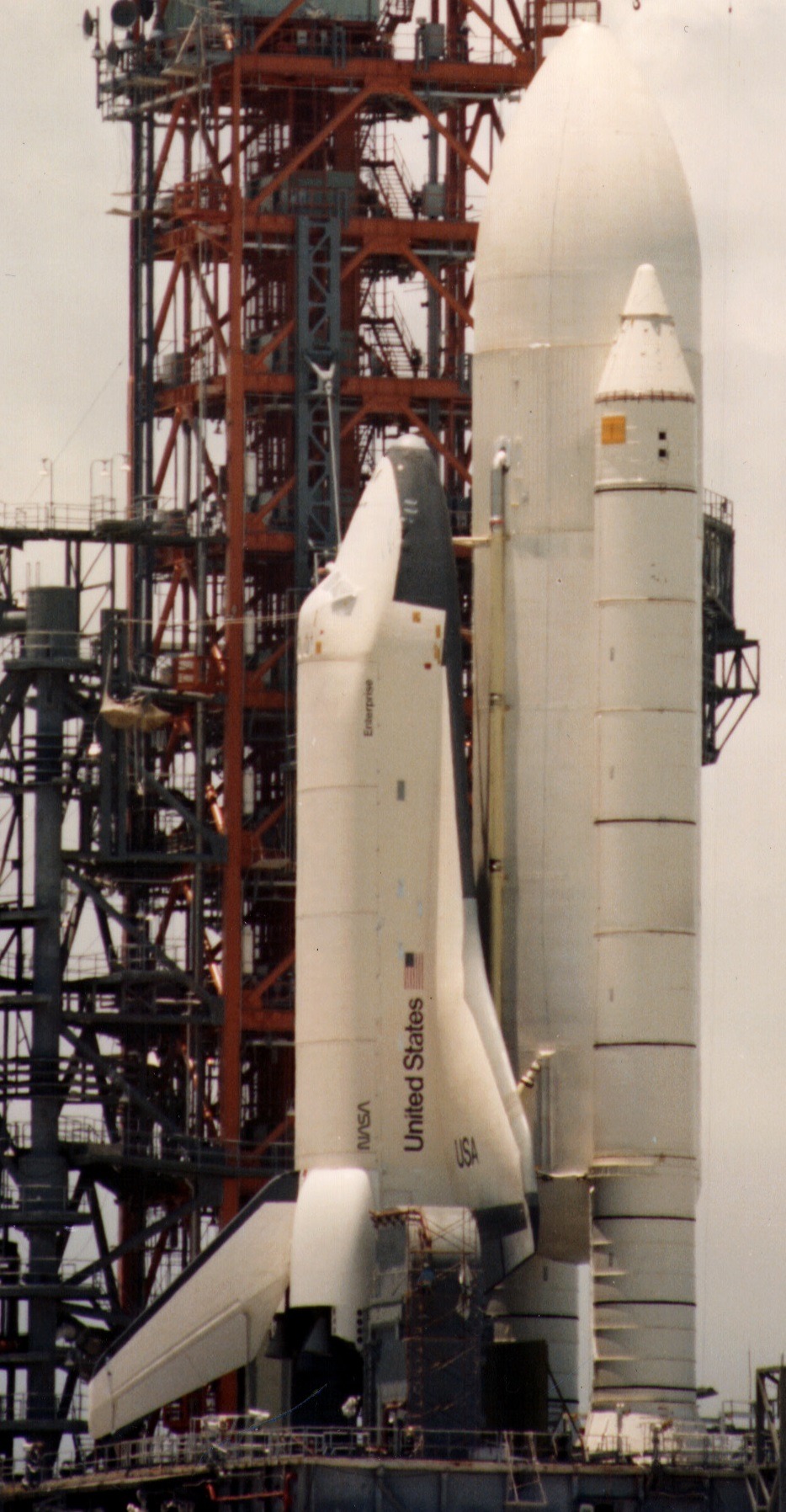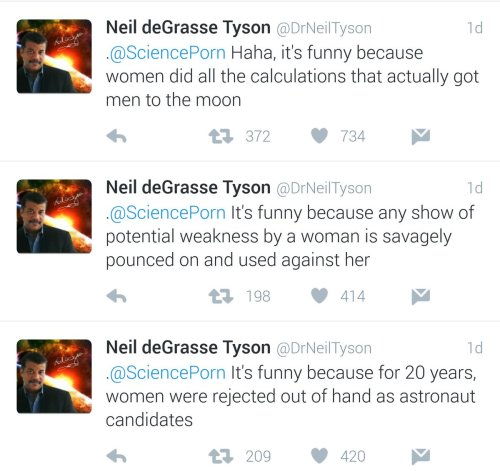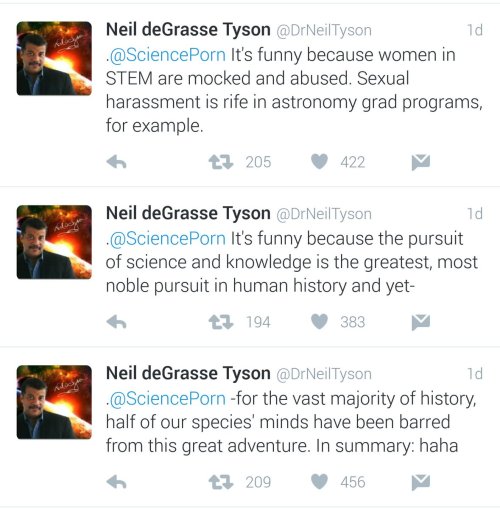Let History Never Forget The Name Enterprise
Let History Never Forget the Name Enterprise
Just as the captains of the fictional 24th century Starfleet blazed a trail among the stars, the space shuttle Enterprise helped pave the way for future space exploration.
Fifty years ago, Star Trek debuted with the USS Enterprise as the main space-faring vessel used in much of the Star Trek universe. As such, the vessel holds a treasured place in the hearts of Star Trek fans and is as much of a character in the show as Kirk and Spock. Over three different series and a total of 14 seasons on TV and 13 feature films, the iterations of Enterprise have captured the imaginations and provided inspiration for its fans across the globe.
This brief history of the shuttle tells the tale of humanity’s first reusable spacecraft. Space shuttles were first built in the late 1970s and were flown in space from 1981 to 2011. Their missions ranged from helping to build the International Space Station to repairing the Hubble Space Telescope.
It’s All In The Name

The first shuttle was originally to be named Constitution, celebrating the country’s bicentennial and was to be unveiled to the public on Constitution Day, Sept. 17, 1976. However, a massive letter-writing campaign by Star Trek fans prompted President Gerald Ford to suggest the change. In the above photo, we see the shuttle Enterprise rolled out in Palmdale, California, with cast members of Star Trek on Sept. 17, 1976.
To Boldly Go …

This circular red, white and blue emblem was the official insignia for the Space Shuttle Approach and Landing Test flights and became a model for future space shuttle mission patch designs, including placing the names of the crew on the patch . The four astronauts listed on the patch are:
Fred Haise., commander of the first crew
Charles Fullerton, pilot of the first crew
Joe Engle, commander of the second crew
Dick Truly, pilot of the second crew
First Impressions

In this image, Enterprise makes its first appearance mated to its boosters as it is slowly rolled to the huge Vehicle Assembly Building (VAB) at Kennedy Space Center. Although she never flew in space, shuttle Enterprise underwent a series of fit and function checks on the pad in preparation for the first launch of its sister craft, Columbia.
Not Meant To Be

Enterprise sits on Launch Complex 39 at Kennedy Space Center undergoing tests after completing its 3.5 mile journey from the VAB. Have you ever wondered why Enterprise never went into space? Converting Enterprise from a training vehicle to space-worthy one was too cost prohibitive, our engineers felt.
Engage

Commander Fred Haise and pilot Charles Fullerton are seen in the cockpit of Enterprise prior to the fifth and final Approach and Landing Test at Dryden Flight Research Center (Armstrong Flight Research Center). The tests were performed to learn about the landing characteristics of the shuttle.


It’s Been An Honor To Serve With You

The Enterprise’s two crews pose for a photo op at the Rockwell International Space Division’s Orbiter assembly facility at Palmdale, California. They are (left to right) Charles Fullerton, Fred Haise, Joe Engle and Dick Truly.
Fair Winds And Following Seas

On July 6, 2012, the Enterprise, atop a barge, passes the Statue of Liberty on its way to the Intrepid Sea, Air and Space Museum, where is now permanently on display.
Learn more about Star Trek and NASA.
Make sure to follow us on Tumblr for your regular dose of space: http://nasa.tumblr.com
More Posts from Scistrike-blog and Others


Penn Jillette and Carolina Peña at Reason Rally
Penn Jillette and Carolina Peña at #ReasonRally
Saturday, June 4th, Penn Jillette introduced Carolina Peña, a former contestant on ‘Equador’s Got Talent’ on the main stage at Reason Rally in Washington DC. Carolina was berated by three of the four judges, not for her singing abilities or overall talent, but for lacking a belief in any gods. She was told that, basically, without God, she could have no talent. The fourth judge quite rightly…
View On WordPress




Watch as NASA Test-Fires the RS-25 Rocket Engine
NASA test-fired an RS-25 rocket engine today, 08/18/2016 at the Stennis Space Center in Bay St. Louis in Mississippi. The RS-25 is one of four modified space shuttle main engines that will help lift the huge SLS rocket off the ground assisted by two solid rocket boosters.* The RS-25 engines are fueled by liquid oxygen and liquid hydrogen. Combined, the four RS-25 engines on SLS will generate 2…
View On WordPress
Let’s All Look at the Moon!
Celebrating Earth’s Nearest Neighbor

Humanity has observed the nighttime sky for millennia, eyeing celestial bodies with wonder. Until the last 50 years or so, telescopes provided our best views of the sky at night. That is, until the Ranger mission broadcast the craft’s descent onto the moon live on March 24, 1965.
+Learn more about Ranger 9
+Watch the video

Our fascination with the moon continues, and since 2010 the organizers of International Observe the Moon Night (InOMN) have turned it into a worldwide, public celebration of lunar science and exploration held annually. One day each year, they invite everyone, everywhere to learn about the moon and to celebrate the cultural and personal connections. We’ll all invited and anyone can host an InOMN event.
+Locations of InOMN Events Around the World
+ Visit International Observe the Moon Night’s site
And, we’re doing our part to let the public know more about our moon. This month’s “What’s up” video is very moon-centric.
+View JPL’s What’s Up for October

Our Night Sky Network at JPL, which bills itself as “astronomy clubs bringing the wonders of the universe to the public,” has a list of astronomy clubs and events across by area, as well as a monthly calendar.
+Learn more
Organizations in our Museum Alliance across the country are also hosting activities. The Museum Alliance was created to be the “front door” to NASA for the world of informal education. The Alliance is a NASA-centric STEAM "community of practice" that includes informal educational organizations, namely, all those outside of the traditional K-12 school system. Our STEAM–Science, Technology, Engineering, Art, and Math–communities include more than 1,400 professionals at more than 700 U.S. museums, science centers, planetariums, NASA Visitor Centers, Challenger Centers, observatories, parks, libraries, camps, and youth-serving organizations as partners in the Museum Alliance.
+Learn more about the Museum Alliance

All us Earth-dwellers can tour the moon via our Moon Tours app that lets you explore the lunar surface from your mobile device. The app includes imagery from lunar orbiters and Apollo missions and is a free download for iOS and Android.
+iOS
+Android
+Check out a full range of NASA apps
Make sure to follow us on Tumblr for your regular dose of space: http://nasa.tumblr.com
NASA and Star Trek
Star Trek debuted in September 1966 and in its various incarnations, the series has been an inspiration to many, even some of us at NASA. The series allowed its fans to explore “strange new worlds” and to dream of what could be right in their living rooms. To celebrate the show’s 50th anniversary, we’ve collected some Trek-themed photos featuring Star Trek cast members and NASA astronauts.
Serious Business

The STS-54 crew of the space shuttle Endeavour in their official “gag” photo are costumed as the bridge crew of the Enterprise as depicted in the movie “Star Trek II: The Wrath of Khan.” The photo was taken on the Star Trek Adventure set of the Universal Studios California theme park in Los Angeles, California, while the crew was on a west coast training and public relations tour during the Summer of 1992. From left to right:
Greg Harbaugh (Mission Specialist/Engineering Officer)
Mario "Spock” Runco Jr. (Mission Specialist/1st Officer/Science Officer)
John Casper (Commander/Captain)
Susan Helms (Mission Specialist/Communications Officer)
Don McMonagle (Pilot/Navigation-Helm Officer)
“I have been, and always shall be, your friend”

Astronaut John Creighton shows the on board Graphical Retrieval Information Display (GRID) computer, which displays a likeness of Mr. Spock aboard STS-051G, June 18, 1985.
“A Keyboard… How Quaint”

Actor James Doohan (who played engineering genius Montgomery Scott in Star Trek) sits in the commanders seat of the Full Fuselage Trainer while astronaut Mario Runco explains the control panel during a tour of Johnson Space Center on Jan. 18, 1991.
“You Wanted Excitement, How’s Your Adrenaline?”

Actress Nichelle Nichols (Uhura in Star Trek) toured Johnson Space Center in Houston on March 4, 1977, while Apollo 12 lunar module pilot and Skylab II commander Alan Bean showed her what it felt like inside the Lower Body Negative Pressure Device and showed her how the Shuttle Procedures Simulator operated.


Nichols paid us another visit in 2012 and 2015 with the Space Traveling Museum.
Infinite Diversity, Infinite Combinations

European Space Agency astronaut Samantha Cristoforetti gave the Vulcan salute aboard the International Space Station shortly after the passing of Leonard Nimoy on Feb. 28, 2015. She commented on Tweeter: “ ‘Of all the souls I have encountered.. his was the most human.’ Thx @TheRealNimoy for bringing Spock to life for us”
Live Long And Prosper

While visiting Johnson Space Center in Houston, TX, George Takei (Hikaru Sulu on the original series) had the chance to exchange Vulcan salutes with Robonaut on May 29, 2012.
“Let’s See What’s Out There”

Scott Bakula, who played Captain Jonathan Archer on Star Trek: Enterprise, stands with astronauts Terry Virts and Mike Fincke on set. The two astronauts made guest appearances on the series finale episode “These Are The Voyages …” March 2005.
Boldly Going For Real

Above is the crew of STS-134, the next to last shuttle mission, in their version of the 2009 Star Trek movie poster.

The crew of Expedition 21 aboard the International Space Station also made a Trek-themed poster in 2009, wearing uniforms from Star Trek: The Next Generation with the Enterprise NX-01 silhouette in the background.
Learn more about Star Trek and NASA.
Make sure to follow us on Tumblr for your regular dose of space: http://nasa.tumblr.com
State of NASA
Over his tenure, President Obama has now invested $147 billion in America’s space program. Our elected leaders, on a bipartisan basis, have chosen to make this investment in our Agency, because they believe in our Journey to Mars and recognize that investments in NASA’s present are investments in America’s future.
Because the State of our NASA is strong, President Obama is recommending a $19 billion budget for the next year to carry out our ambitious exploration and scientific discovery plans. Here are the areas in which we’ll continue to invest:
Solar System and Beyond

As we explore our solar system and search for new worlds, we look to answer key questions about our home planet, neighboring planets in our solar system and the universe beyond.
Journey to Mars

We’re developing the capabilities needed to send humans to an asteroid by 2025 and Mars in the 2030s. Mars is a rich destination for scientific discovery and robotic and human exploration as we expand our presence into the solar system. Its formation and evolution are comparable to Earth, helping us learn more about our own planet’s history and future.
International Space Station

Earth Right Now

We use the vantage point of space to increase our understanding of our home planet, improve lives and safeguard our future. Our Earth science work also makes a difference in people’s lives around the world every day.
Technology Drives Exploration

Sustained investments in our technology advance space exploration, science and aeronautics capabilities. We seek to improve our ability to access and travel through space; land more mass in more locations throughout our solar system; live and work in deep space and on planetary bodies; build next generation air vehicles, and transform the ability to observe the universe and answer profound questions in Earth and space sciences.
Aeronautics

Thanks to advancements in aeronautics developed by NASA, today’s aviation industry is better equipped than ever to safely and efficiently transport all those passengers to their destinations.

The President’s FY 2017 budget provides $790 million to our Aeronautics Research Mission Directorate. This investment will accelerate aviation energy efficiency, advance propulsion system transformation and enable major improvements in aviation safety and mobility. The future of flight will: utilize greener energy, be half as loud, use half the fuel and will create quieter sonic booms.
State of NASA Social

Today, we have opened our doors and invited social media followers and news media to an in-person event, at one of our 10 field centers. Guests will go on a tour and see highlights of the work we’re doing. You can follow along digitally on Twitter: https://twitter.com/NASASocial/lists/state-of-nasa-all1.
Check our Twitter Moment HERE.
Did you miss NASA Administrator Bolden’s remarks? You can watch a full recap HERE.
For all budget related items, visit: http://www.nasa.gov/news/budget/index.html
Make sure to follow us on Tumblr for your regular dose of space: http://nasa.tumblr.com
Religious Fundamentalist Ken Ham Battles US Constitution on Twitter
Religious Fundamentalist Ken Ham Battles US Constitution
This morning, Ken Ham, of Answers in Genesis, took to Twitter to release a barrage of tweets insisting that public schools have the right to plan and execute school trips to his newly-opened Ark Encounter biblical theme park which teaches, among other things, that the Earth is no older than 6,000 years and that evolution is false.
It seems that Mr. Ham is blissfully unfamiliar with the…
View On WordPress
-
 macalaelliottphotography liked this · 1 year ago
macalaelliottphotography liked this · 1 year ago -
 credsiocofi liked this · 1 year ago
credsiocofi liked this · 1 year ago -
 ikemenprincessnaga liked this · 2 years ago
ikemenprincessnaga liked this · 2 years ago -
 monroejigsaw reblogged this · 5 years ago
monroejigsaw reblogged this · 5 years ago -
 monroejigsaw liked this · 5 years ago
monroejigsaw liked this · 5 years ago -
 worldinmywindow2 liked this · 5 years ago
worldinmywindow2 liked this · 5 years ago -
 limegreenbabx liked this · 5 years ago
limegreenbabx liked this · 5 years ago -
 elinsmiles liked this · 5 years ago
elinsmiles liked this · 5 years ago -
 kelbasco reblogged this · 6 years ago
kelbasco reblogged this · 6 years ago -
 kelbasco liked this · 6 years ago
kelbasco liked this · 6 years ago -
 fossilsandrelics reblogged this · 6 years ago
fossilsandrelics reblogged this · 6 years ago -
 wemblingfool reblogged this · 6 years ago
wemblingfool reblogged this · 6 years ago -
 commander-ezri reblogged this · 6 years ago
commander-ezri reblogged this · 6 years ago -
 commander-ezri liked this · 6 years ago
commander-ezri liked this · 6 years ago -
 plain-and-simple-ninja liked this · 7 years ago
plain-and-simple-ninja liked this · 7 years ago -
 glynmostyn reblogged this · 7 years ago
glynmostyn reblogged this · 7 years ago -
 alienglidder reblogged this · 7 years ago
alienglidder reblogged this · 7 years ago -
 marie-curie liked this · 7 years ago
marie-curie liked this · 7 years ago -
 fvtsshuttle reblogged this · 7 years ago
fvtsshuttle reblogged this · 7 years ago -
 asukkhati13 liked this · 7 years ago
asukkhati13 liked this · 7 years ago -
 usernamesarebitches reblogged this · 7 years ago
usernamesarebitches reblogged this · 7 years ago -
 usernamesarebitches liked this · 7 years ago
usernamesarebitches liked this · 7 years ago -
 camshaft22 liked this · 7 years ago
camshaft22 liked this · 7 years ago -
 underhill6-blog1 liked this · 7 years ago
underhill6-blog1 liked this · 7 years ago -
 justsomeguypiastri liked this · 7 years ago
justsomeguypiastri liked this · 7 years ago -
 cmjl7811 liked this · 7 years ago
cmjl7811 liked this · 7 years ago
Exposing the misinformation of science-deniers, moon-hoaxers, flat-earthers and the rest of the tinfoil hat wearing crowd at www.sciencedenierhallofshame.com
99 posts
